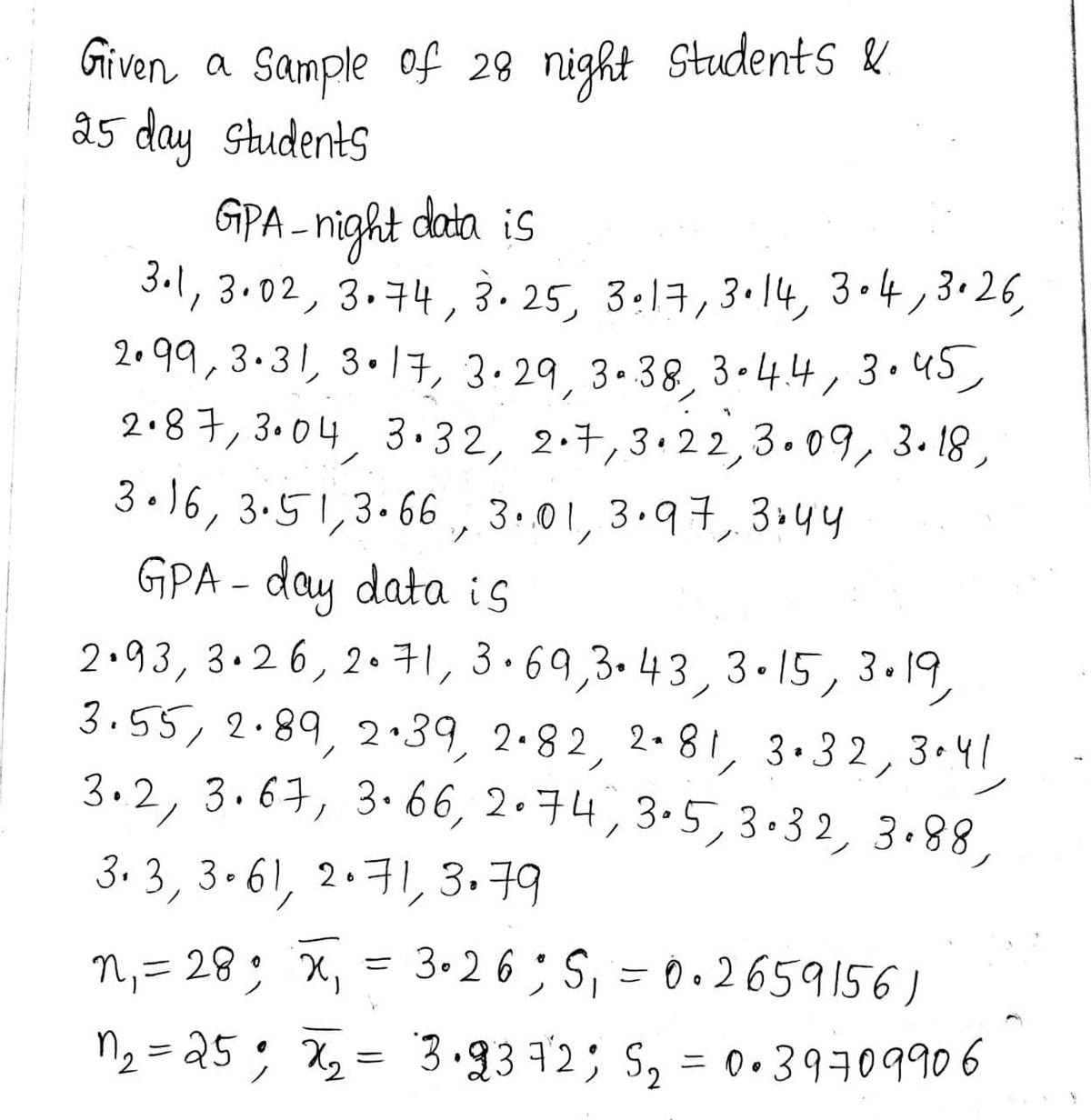You are testing the claim that the mean GPA of night students is different from the mean GPA of day students. A sample of 28 night students and 25 day students and their GPA's are recorded below. Test the claim using a 5% level of significance. Assume the population variances are unequal and that GPAs are normally distributed. Give answers to 4 decimal places. GPA-Night GPA-Day 3.1 2.93 3.02 3.26 3.74 2.71 3.25 3.69 3.17 3.43 3.14 3.15 3.4 3.19 3.26 3.55 2.99 2.89 3.31 2.39 3.17 2.82 3.29 2.81 3.38 3.32 3.44 3.41 3.45 3.2 2.87 3.67 3.04 3.66 3.32 2.74 2.7 3.5 3.22 3.32 3.09 3.88 3.18 3.3 3.16 3.61 3.51 2.71 3.66 3.79 3.01 3.97 3.44 What are the correct hypotheses? Note this may view better in full screen mode. Select the correct symbols in the order they appear in the problem. H0: H1: Based on the hypotheses, find the following: Test Statistic= p-value= The correct decision is to . The correct summary would be: that the mean GPA of night students is different from the mean GPA of day students.
You are testing the claim that the mean GPA of night students is different from the mean GPA of day students. A sample of 28 night students and 25 day students and their GPA's are recorded below. Test the claim using a 5% level of significance. Assume the population variances are unequal and that GPAs are
| GPA-Night | GPA-Day |
|---|---|
| 3.1 | 2.93 |
| 3.02 | 3.26 |
| 3.74 | 2.71 |
| 3.25 | 3.69 |
| 3.17 | 3.43 |
| 3.14 | 3.15 |
| 3.4 | 3.19 |
| 3.26 | 3.55 |
| 2.99 | 2.89 |
| 3.31 | 2.39 |
| 3.17 | 2.82 |
| 3.29 | 2.81 |
| 3.38 | 3.32 |
| 3.44 | 3.41 |
| 3.45 | 3.2 |
| 2.87 | 3.67 |
| 3.04 | 3.66 |
| 3.32 | 2.74 |
| 2.7 | 3.5 |
| 3.22 | 3.32 |
| 3.09 | 3.88 |
| 3.18 | 3.3 |
| 3.16 | 3.61 |
| 3.51 | 2.71 |
| 3.66 | 3.79 |
| 3.01 | |
| 3.97 | |
| 3.44 |
What are the correct hypotheses? Note this may view better in full screen
H0:
H1:
Based on the hypotheses, find the following:
Test Statistic=
p-value=
The correct decision is to .
The correct summary would be: that the mean GPA of night students is different from the mean GPA of day students.

Trending now
This is a popular solution!
Step by step
Solved in 3 steps with 7 images









